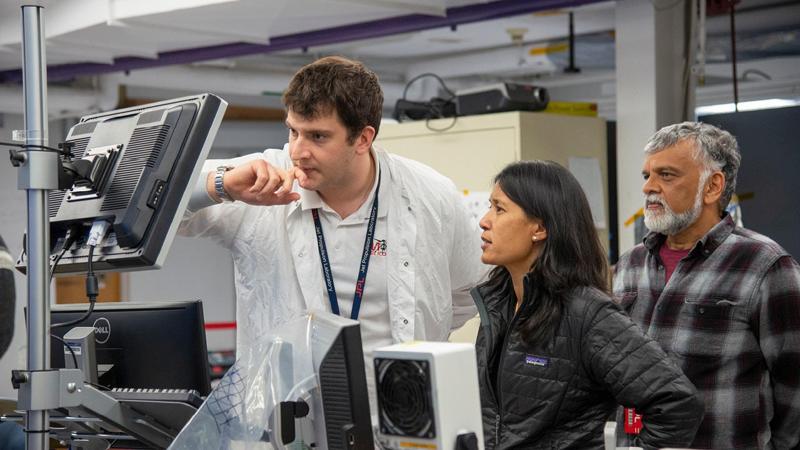Taking Flight: The Mars Helicopter Ingenuity and the Future of Mars Exploration
Feature Story
By Andrew Robinson
Last update November 3, 2020

Creating an aircraft that will fly in the Martian atmosphere is an engineering tour de force. The aircraft must be able to operate in an environment that has approximately 1% of the atmospheric density of Earth, and withstand extreme temperatures — the red planet’s nightly temperatures are known to plunge to around minus 130 degrees Fahrenheit. What’s more, the aircraft must be controlled remotely — from more than 40 million miles, the distance from Earth to Mars.
“But that is precisely what the Mars helicopter Ingenuity was designed to do,” said MiMi Aung, Ingenuity project manager at NASA’s Jet Propulsion Laboratory (JPL), during a presentation at a meeting of the National Academies’ Aeronautics and Space Engineering Board. A technology demonstration project flying aboard NASA’s Mars 2020 mission, the helicopter was launched with the Perseverance rover on July 30 and will land at the Jezero Crater on Feb. 18 of next year. Ingenuity, currently attached to the rover’s belly, is expected to be deployed onto the surface of Mars sometime in early spring of next year.
If all goes according to plan, Ingenuity will be the first aircraft to attempt powered-controlled flight on another planet. “Mars helicopter Ingenuity will make the first rotorcraft flight on Mars,” said Aung. “In fact, as human beings, we have never flown a rotorcraft outside of our own Earth’s atmosphere.”
New Opportunities in Exploration
The Perseverance rover will explore the Jezero Crater on Mars, which researchers believe billions of years ago was lake brimming with water.
“[Aerial mobility] promises to open new classes of missions, both in science and human exploration,” said Aung. “Today, we explore Mars from orbiters in space and rovers on the surface … we’re not using the aerial dimension.”
Standing at slightly only over 2.5 feet tall, with a diameter of just under 4 feet wide, and weighing approximately 4 pounds, Ingenuity was designed to be compact and lightweight enough to fit on the deck of the Perseverance rover. The rotor blades spin at about 2,400 revolutions per minute, allowing the helicopter to lift and fly over the Martian surface. It is also outfitted with a downward-facing black and white camera used for navigation and a 13-megapixel horizon-facing color camera (commonly found in smart phones today), which could provide some beautiful vistas including more distant terrain.

Engineering for a New World
“Can one really lift a helicopter in the thin atmosphere of Mars? Its feasibility was very fairly questioned,” said Aung of the early challenges that faced the project.
Multiple test flights at JPL in the 25-foot diameter Space Simulator, which can create a near-vacuum environment, allowed the team to make exact adjustments in order to have controlled, stable flight with different flying conditions on Mars. With over six years of design and testing behind it, the flight tests of Ingenuity could very well herald a new era in space exploration.
Explore more on the Aeronautics and Space Engineering Board webpage



